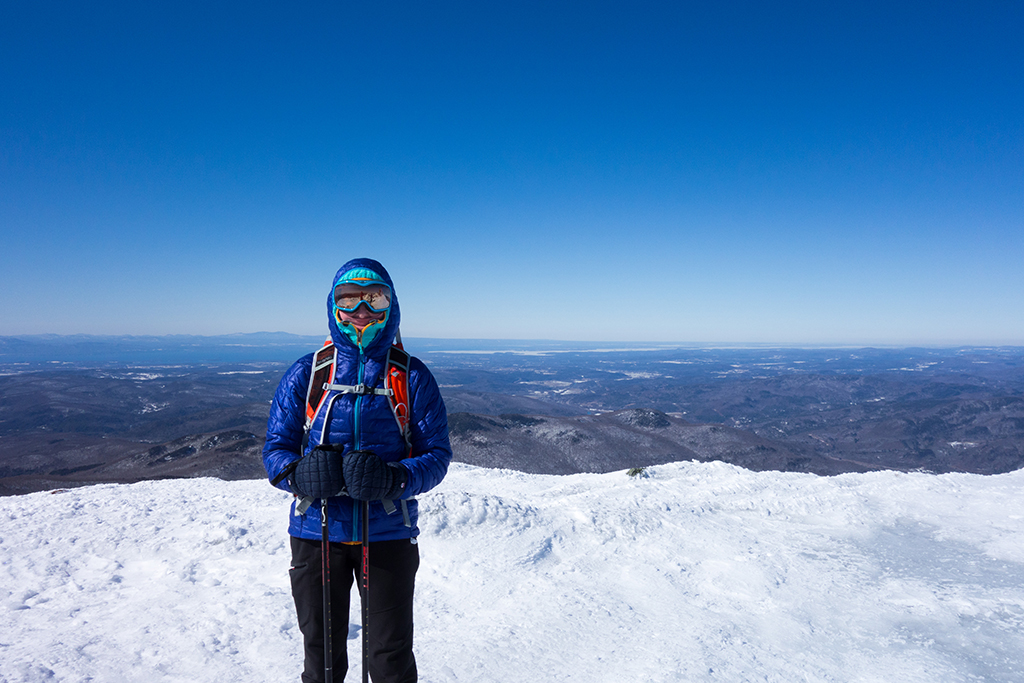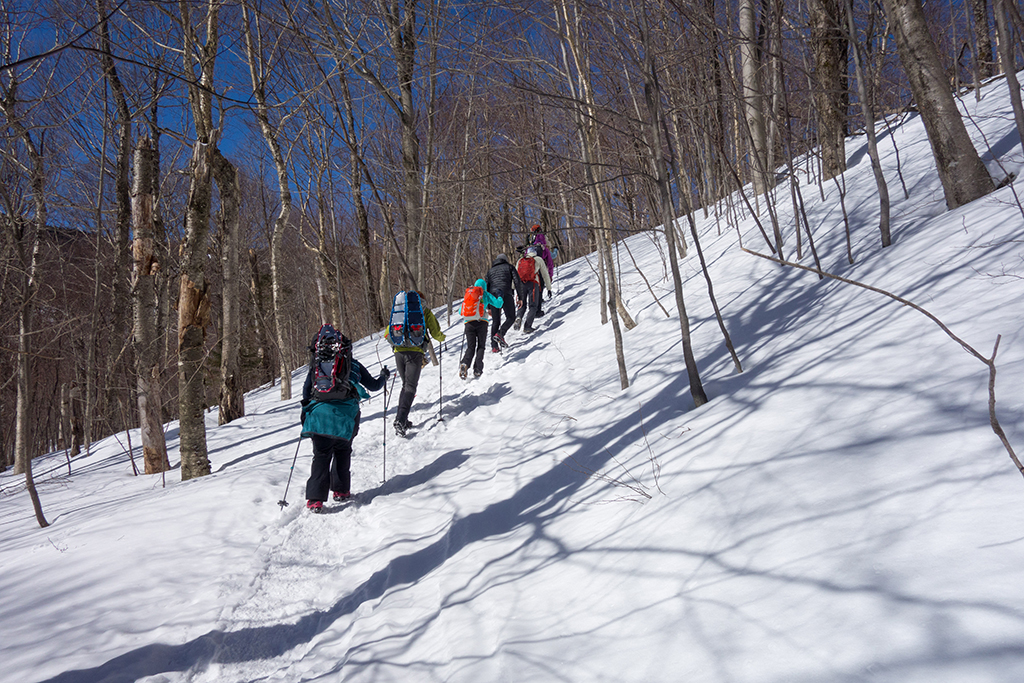
Vermont Winter Hiking in March Means Longer, Warmer Days on the Trails
March 05, 2021
Mud season is just around the corner, but that doesn’t mean you need to hang up your microspikes just yet. In fact, late winter and the early days of spring can be an ideal time to hike Vermont’s mountains.
Vermont’s winter hiking season is weather-dependent but typically lasts at least through March when there’s still plenty of snowpack in the mountains.
“But it also depends on location, elevation, solar orientation, depth of snowpack, and spring rainfall,” says Lorne Currier, volunteer and education coordinator for the Green Mountain Club, an organization dedicated to protecting and maintaining The Long Trail system and fostering the stewardship of Vermont’s mountains and hiking trails.
Vermont Winter Hiking: Location, Location, Location
When thinking about where to hike in March, northern Vermont’s high-elevation mountains keep snow longer than southern Vermont peaks. At the same time, north-facing slopes will keep a strong snowpack much longer than south-facing slopes, Currier says.
“When the lower trails melt out and expose a saturated and fragile hiking trail, you should avoid those trails,” Currier says.
Those southern Vermont, south-facing slopes that become muddy sooner, will also be the quickest to dry out as spring progresses. The northern Vermont, north-facing slopes will stay saturated with mud well into May, she adds.
“With the deep snowpack now in northern Vermont, our best guess is that there’s another three to four weeks of winter hiking in northern Vermont’s Green Mountains, but that could change,” Currier says.
The perks to hiking in late winter or early spring compared to a frigid January day might seem like a no-brainer. But there are pros and cons, Currier says.
Pros to Late Winter Hiking
- Later winter tends to feature the deepest snowpack, which means solidly packed trails, with snow covering all the pointy rocks on trails, winter bushwhacking, and beautiful mountain views, Currier says.
- The days are longer, allowing more opportunity for winter hiking. You don’t need to leave for every hike at 8 a.m., and you can plan for lengthier hikes.
- Early March occasionally has gorgeous, bluebird days with the warmth of the sun.
The Cons
- Warm days with a deep snowpack can mean lots of post-holing. The soft, punky snow has a weakened structure, and you may find yourself suddenly sinking through up to your thigh on stretches of trail where you would normally float by on snowshoes. Post-holing can be exhausting, dangerous, and bad for future trail conditions when the trail freezes up again, Currier says.
- Warmer days mean you may get rain instead of snow. Rain will soak through your body sooner and can increase the risk of hypothermia.
- Warm days with soft snow will glob up on your snowshoes or microspikes, and you’ll have eight-pound snowballs on your feet, she adds.
Easy Vermont Winter Hiking Trails

-Photos by Kristin McLane for the Green Mountain Club’s 2020 Winter Trails Day
If you’re new to winter hiking and thinking about hitting the trails, the Green Mountain Club features a list of easy Vermont winter hikes on its website, including Deer Leap Trail in Killington, Beane Trail to Birch Glen Shelter in Huntington, Clarendon Gorge to Airport Lookout in Shrewsbury, and Smuggler’s Notch, Route 108 in Stowe.
The club also recommends the following easy hikes in winter:
- Camel’s Hump View Trail in Duxbury
- Mount Philo in Charlotte
- Weissner Woods in Stowe
- Kirchner Woods in Stowe
- Marsh-Billing-Rockefeller National Historic Park in Woodstock
Resources from the Green Mountain Club
Winter Hiking Workshop Recording
The Green Mountain Club keeps a close eye on late winter conditions and will advise where hiking is or isn’t recommended.
For more information, contact the Green Mountain Club’s virtual visitor center at 802-244-7037, email [email protected], or message them on Facebook or Instagram.




No Comments